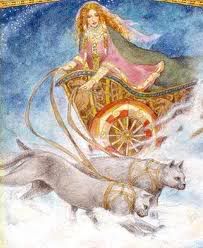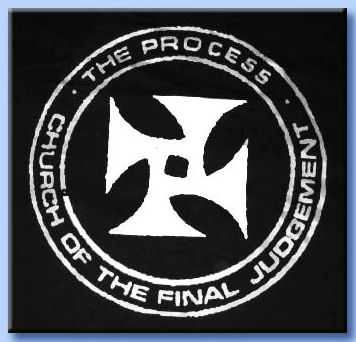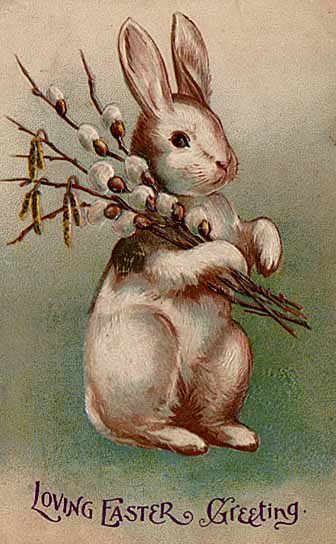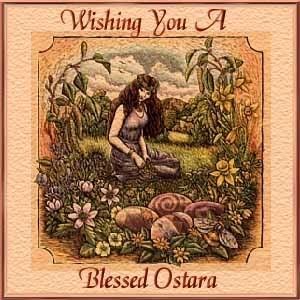Showing posts with label Freya. Show all posts
Showing posts with label Freya. Show all posts
Tuesday, January 27, 2015
Well known "angel photograph" from 1952 bears a strong resemblance to the Goddess Freya
Someone could argue that the Norse gods are never actually "seen." Well, perhaps it's possible that that may not be entirely true..? Even the most crude "photo shop" wasn't available until 1982. Look closely... doesn't this apparition appear to be the perfect archetype of the beautiful Freya? Just a Heathen hunch. We don't know that it isn't Freya...
The Norse/Germanic Goddess Freya "is a goddess associated with love, sexuality, beauty, fertility, gold, seiðr (magic), war, and death. Often in ancient Germanic pagan systems, "death" really meant "death and to a new arising." According to the below account, could Freya have favored the British in this particular battle.. and showed up for inspiration?
Doidge Angel Photograph
The Doidge angel photograph was found on some film Danny Sullivan purchased at a British junk shop. Accompanying the film were several letters from the 1950s that related stories of angel sightings dating back to World War I. The letters had belonged to William Doidge who had written an American soldier named Doug whose friend had seen an angel appear above a Gloucestershire lake prior to twenty soldiers dying there in a bridge collapse. Doidge searched Woodchester Mansion for the angel and in 1952, he captured this amazing angel photograph.
More Behind the Doidge Angel Photo
This stunning angel photograph was found on some film Danny Sullivan bought at a British junk shop. Accompanying the film were several letters from the 1950s that related stories of angel sightings dating back to World War I. The letters had belonged to William Doidge who had written an American soldier named Doug whose friend had seen an angel appear above a Gloucestershire lake prior to twenty soldiers dying there in a bridge collapse. Doidge wrote in the letters concerning how British soldiers in 1914 were led into battle at Mons, France by angels.
Doidge was put into contact with Doug after being smitten with the World War I story. This led him to contact Doug after he had heard about his friend's story of the angel sighting at Gloucestershire's Woodchester Mansion. Doidge searched Woodchester Mansion for the angel and in 1952, he apparently was fortunate to capture the amazing angel photograph. Over the years, rumours have abounded that Danny has had a movie deal in the works regarding the angel sighting stories.
.
Labels:
Freya,
Germanic paganism,
legend,
Norse mythology,
spirituality,
supernatural
Monday, November 3, 2014
Prayer to Freya as Seer and Lady
Great Goddess, Mistress of cats,
Lady of love, beautiful Vana-Goddess,
Fulfill my greatest needs, O glorious one.
Teach me the magic I need.
Give me a glimpse of your deep wisdom.
Teach me in dreams. Enrich my life.
O Lady, you are Golden-Tears of Asgard
Lady of love, beautiful Vana-Goddess,
You are the Shape-shifter, the Sayer,
The Independent One.
Give me the strength and the magic I need.
~~www.goddessfreya.info~~
.
Labels:
Europe,
folk spirituality,
Freya,
Germanic neopaganism,
goddesses,
Norse mythology,
pre-Christian
Thursday, August 14, 2014
Hazel tree patchwork: Part II
In the last five years or so, our Earth has been making some bizarre noises, usually from under the ground. These occurrences come in many forms, and you can find them on YouTube. The sky is the limit as far as how different people and concerns can interpret what this is or why it's happening. However, the occurrence in the above video from a city in rural British Columbia takes the cake! It sounds like a massive trumpet or horn. If I allow my imagination to go free, I almost imagine something out've Odinic mythology, and the thunder-like grumbling made Thor come to mind. Perhaps the trumpets at the Battle of Legnano. Also, the trees rustling in the wind, especially after the sounds are over, remind me of the spirit of the Almother. Something tells me that this whole phenomenon has something to do with the "electric universe." Like with so many other subjects, modern science rejects the electric universe because then they would have to say "oh, all of the things we have proven in the past, well, they're all false," which wouldn't work well for scientific/academic "careerists."
******
Pagan calendar website
This Pagan calendar shows Pagan, Witch, Druid and Heathen festivals, dates and events.
This site is from the UK, and doesn't include southern or eastern European traditions, but there's so much overlap. Good daily rundown, with moon cycles. I think pagans should develop their own traditions and important dates to merge into this concept.
******
"The Process Church"
I watch a lot of YouTube videos, but usually the subjects aren't applicable here. However, if you wanted to watch something very macob but still interesting, there are quite a few videos about the Satanic "Process Church." They were involved in many bizarre happenings. This, of course, has nothing to do with "native-folk spirituality." Many Satanists say that they're actually Atheists who worship the self in some manner. There are also many who worship the Satan of the Christian Bible. I have no doubt that the Process Church is still around. Their philosophers are pretty dark, as opposed to--for example--the Temple of Set, which I believe tries to avoid a negative image for the most part. Also, many of the webpages or articles devoted to the Process Church are pretty dark in nature.
******
Since I mentioned Mt. Shasta in part one, I found the main documentary. Although this generally goes beyond what this blog covers, the metaphysical power of mountains does tie in to the folk-spirit concept. Many times the works of researchers like Jordan Maxwell, Michael Tsarion, Mark Passio, Jay Wiedner, or David Wilcock do overlap.
******
"Polytheists calling "Pagan" a negative term?
Two recent posts by the AFA present this term negatively. One, entitled 'A Declaration from the European Council of Ethnic Religions', quoted the council's declaration: "We object to the use of the term “pagan” by extremist political groups of any kind, as it reflects negatively on our reputation." This may be partly true, but doesn't the term "religious" also give a false perception in the minds of most people? I think I would rather be called a "pagan," than to be called "religious."
The other post was entitled 'The Difference Between Asatru and Modern "Paganism."' The post, which was only one paragraph, stated: Asatru has much more in common with traditional American Indian religion, indigenous African religion, or similar ethnic beliefs than with what passes for "paganism" in the modern industrialized West. It is the “way of a people” - in our case, the people of Northern Europe. It is a part of our deeper identification, our way of relating to the Holy, an expression of the soul of our Folk. We have been cut off from these root for too long...but every day, our sense of reconnection grows!
I think there is a need for more clarity here. For one thing, Asatru/Odinism--during the late the pre-Christian era-- was dominant in what is today Norway, Sweden, Denmark, Holland, Germany, Switzerland, Austria, and what had been Prussia. This wouldn't include Finland, which had a different indigenous spiritual tradition and pantheon of gods. Still, that's a large territory. However, it wasn't the only tradition of northern Europe! The reason I think this is applicable here is that this "modern paganism," is at least partly derived from traditions of Europe... including those which co-existed in what were these Odinic regions. Therefore, in those cases, how could Asatru be closer to native spiritual traditions on other continents?
I understand, the AFA is making reference to some of the eclectic, rootless, and generally jackassy behavior of some Wiccans and Pagans. However, there's sometimes a thin line between some of that behavior and what really was a tradition of very spirited ceremonies... such as parades with animal and other masks. For example, ancient Gaul (today France) was not Odinic! Certainly there was a lot of crossover, Odinic influence touched every part of Europe at some point, and it may have been the primary pre-Christian tradition of northern-central Europe. The Druids, at one point, were present in what is today the British Isles, France, and parts of Germany; as well as perhaps Scandinavia, Spain, and elsewhere. That is also a large territory.
This declaration by the European Council of Ethnic Religions umbrella organization is a good thing. It addresses many of the problems of these native spiritual folk societies. Interestingly, among these societies three were from Italy: Societas Hesperiana (Greek pantheon in Italy), Movimento Tradizionale Romano (Roman pantheon), and Federazione Pagana Italiana (Celtic and Streghe traditions). It's interesting that the Roman groups used the phrase "Saturnia Tellus," which means something like "the land of Saturn"... as the peninsula was once known as "Saturnia." These aren't the only groups in Italy. Comunità Odinista (Langobard/Odinist) and Ordine Bardi, Ovati e Druidi (Gaulish/Druidic) come to mind. Comunità Odinista is a worldwide group for Odinic-Langobard descendants, and Ordine Bardi, Ovati, e Druidi is the Italian branch of a worldwide group called The Order of Bards, Ovates, and Druids. It's important to remember that, although this all sounds so organized, these are very small groups.
******
The "Llullaillaco Maiden" was a fifteen year old Amerindian girl who was sacrificed five-hundred years ago, and was discovered frozen inside of an inactive Argentine volcano at 22,000 feet. After being thawed out, she was put in a museum in Argentina, and she looks as though she could wake up, stand, and walk away as seen here.
******
 A website all about the Norse/Langobard Goddess Freya:
A website all about the Norse/Langobard Goddess Freya:GoddessFreya.info
There is a lot of interesting information and folklore about Freya here. Some of the images are great; some too overtly sexualized. I especially like the prayers and invocations.
******
Reality star lives like an ancient Celt
Mick Dodge seems to be a modern-day "ancient Celt." He looks like, has the survival skills of, and lives in harmony with the land like.. a Celt.
Watch: Mick and Will build a forest roundhouse, an ancient structure that the Celts inhabited thousands of years ago.
******
Brescian Stiletto C. 1600 for sale by Fagan Arms
Brescia, Italy has been noted for the quality of its metal work since the early Renaissance. Pierced, embossed and relief chiseled elements for furniture, swords, daggers, armor and later, firearms of the finest quality were produced. This stilleto is a product of a Brescian workshop of the late Renaissance. Its deeply chiseled hilt is adorned with lovely scrolling Spring tendrils with heart shaped leaves in ironic, a doubly ironic contrast to its sole function: to end life. The scalloped edge diamond section blade is made to penetrate protective clothing and the scallops may have been intended to facilitate the introduction of poison or and infectant into the wound. Blade length: 6 7/16"
Price: $2,800
I would love to own that. There are some good and very affordable replicas at BudK.
.
Labels:
Asatru,
Brescia,
earth,
folk spirituality; pre-Christian,
Freya,
mountains,
neopaganism,
occultism,
polytheism
Sunday, February 9, 2014
Valentine's Day - The Heart of Freya
Freya's heart
Freyja's heart is the sign of the blessings of the goddess Freyja and is the symbol of those given to her mysteries. This particular heart symbol represents love...
--Ron McVan; 'Creed of Iron'
.
Freyja's heart is the sign of the blessings of the goddess Freyja and is the symbol of those given to her mysteries. This particular heart symbol represents love...
--Ron McVan; 'Creed of Iron'
.
Sunday, March 31, 2013
Some pagan roots of Easter
Apparently there are pagan links with Easter from the ancient Near East and other places over time, but I just wanted to put out a few from European traditions from Wikipedia.
Etymology
The modern English term Easter, cognate with modern German Ostern, developed from the Old English word Ēastre or Ēostre, which itself developed prior to 899. This is generally held to have originally referred to the name of an Anglo-Saxon goddess, Ēostre, a form of the widely attested Indo-European dawn goddess. The evidence for the Anglo-Saxon goddess, however, has not been universally accepted, and some have proposed that Eostre may have meant "the month of opening" or that the name Easter may have arisen from the designation of Easter Week in Latin as in albis.
Computations
In 725, Bede succinctly wrote, "The Sunday following the full Moon which falls on or after the equinox will give the lawful Easter." However, this does not reflect the actual ecclesiastical rules precisely. One reason for this is that the full moon involved (called the Paschal full moon) is not an astronomical full moon, but the 14th day of a calendar lunar month. Another difference is that the astronomical equinox is a natural astronomical phenomenon, which can fall on 19, 20 March, or 21, while the ecclesiastical date is fixed by convention on 21 March.
Ēostre
Ēostre or Ostara (Northumbrian Old English: Ēostre; West Saxon Old English: Ēastre; Old High German: *Ôstara) is a goddess in Germanic paganism who, by way of the Germanic month bearing her name (Northumbrian: Ēosturmōnaþ; West Saxon: Ēastermōnaþ; Old High German: Ôstarmânoth), is the namesake of the festival of Easter.
Jacob Grimm, *Ostara, and Easter customs
In his 1835 Deutsche Mythologie, Jacob Grimm cites comparative evidence to reconstruct a potential continental Germanic goddess whose name would have been preserved in the Old High German name of Easter, *Ostara. Addressing skepticism towards goddesses mentioned by Bede, Grimm comments that "there is nothing improbable in them, nay the first of them is justified by clear traces in the vocabularies of Germanic tribes." Specifically regarding Ēostre, Grimm continues that:
We Germans to this day call April ostermonat, and ôstarmânoth is found as early as Eginhart. The great christian festival, which usually falls in April or the end of March, bears in the oldest of OHG remains the name ôstarâ ... it is mostly found in the plural, because two days ... were kept at Easter. This Ostarâ, like the [Anglo-Saxon] Eástre, must in heathen religion have denoted a higher being, whose worship was so firmly rooted, that the christian teachers tolerated the name, and applied it to one of their own grandest anniversaries.
Hares and Freyja
In Northern Europe, Easter imagery often involves hares and rabbits. Citing folk Easter customs in Leicestershire, England where "the profits of the land called Harecrop Leys were applied to providing a meal which was thrown on the ground at the 'Hare-pie Bank'", late 19th-century scholar Charles Isaac Elton theorizes a connection between these customs and the worship of Ēostre. In his late 19th-century study of the hare in folk custom and mythology, Charles J. Billson cites numerous incidents of folk custom involving the hare around the period of Easter in Northern Europe. Billson says that "whether there was a goddess named Eostre, or not, and whatever connection the hare may have had with the ritual of Saxon or British worship, there are good grounds for believing that the sacredness of this animal reaches back into an age still more remote, where it is probably a very important part of the great Spring Festival of the prehistoric inhabitants of this island."
Some scholars have linked customs and imagery involving hares to Ēostre and the Norse goddess Freyja. Writing in 1972, John Andrew Boyle cites commentary contained within an etymology dictionary by A. Ernout and A. Meillet, where the authors write that "Little else [...] is known about [Ēostre], but it has been suggested that her lights, as goddess of the dawn, were carried by hares. And she certainly represented spring fecundity, and love and carnal pleasure that leads to fecundity." Boyle responds that nothing is known about Ēostre outside of Bede's single passage, that the authors had seemingly accepted the identification of Ēostre with the Norse goddess Freyja, yet that the hare is not associated with Freyja either. Boyle writes that "her carriage, we are told by Snorri, was drawn by a pair of cats — animals, it is true, which like hares were the familiars of witches, with whom Freyja seems to have much in common." However, Boyle adds that "on the other hand, when the authors speak of the hare as the 'companion of Aphrodite and of satyrs and cupids' and point out that 'in the Middle Ages it appears beside the figure of Luxuria', they are on much surer ground and can adduce the evidence of their illustrations."
Modern popular culture and modern veneration
Jacob Grimm's reconstructed *Ostara has had some influence in popular culture since. The name has been adapted as an asteroid (343 Ostara, 1892 by Max Wolf), a Mödling, Austria-based German nationalist book series and publishing house (1905, Ostara), and a date on the Wiccan Wheel of the Year (Ostara, 21 March). In music, the name Ostara has been adopted as a name by the musical group Ostara, and as the names of albums by :zoviet*france: (Eostre, 1984) and The Wishing Tree (Ostara, 2009). Eostre appears in Neil Gaiman's novel, American Gods.
In some forms of Germanic Neopaganism, Eostre (or Ostara) is venerated. Regarding this veneration, Carole M. Cusack comments that, among adherents, Eostre is "associated with the coming of spring and the dawn, and her festival is celebrated at the spring equinox. Because she brings renewal, rebirth from the death of winter, some Heathens associate Eostre with Idunn, keeper of the apples of youth in Scandinavian mythology."
.
Etymology
The modern English term Easter, cognate with modern German Ostern, developed from the Old English word Ēastre or Ēostre, which itself developed prior to 899. This is generally held to have originally referred to the name of an Anglo-Saxon goddess, Ēostre, a form of the widely attested Indo-European dawn goddess. The evidence for the Anglo-Saxon goddess, however, has not been universally accepted, and some have proposed that Eostre may have meant "the month of opening" or that the name Easter may have arisen from the designation of Easter Week in Latin as in albis.
Computations
In 725, Bede succinctly wrote, "The Sunday following the full Moon which falls on or after the equinox will give the lawful Easter." However, this does not reflect the actual ecclesiastical rules precisely. One reason for this is that the full moon involved (called the Paschal full moon) is not an astronomical full moon, but the 14th day of a calendar lunar month. Another difference is that the astronomical equinox is a natural astronomical phenomenon, which can fall on 19, 20 March, or 21, while the ecclesiastical date is fixed by convention on 21 March.
Ēostre
Ēostre or Ostara (Northumbrian Old English: Ēostre; West Saxon Old English: Ēastre; Old High German: *Ôstara) is a goddess in Germanic paganism who, by way of the Germanic month bearing her name (Northumbrian: Ēosturmōnaþ; West Saxon: Ēastermōnaþ; Old High German: Ôstarmânoth), is the namesake of the festival of Easter.
Jacob Grimm, *Ostara, and Easter customs
In his 1835 Deutsche Mythologie, Jacob Grimm cites comparative evidence to reconstruct a potential continental Germanic goddess whose name would have been preserved in the Old High German name of Easter, *Ostara. Addressing skepticism towards goddesses mentioned by Bede, Grimm comments that "there is nothing improbable in them, nay the first of them is justified by clear traces in the vocabularies of Germanic tribes." Specifically regarding Ēostre, Grimm continues that:
We Germans to this day call April ostermonat, and ôstarmânoth is found as early as Eginhart. The great christian festival, which usually falls in April or the end of March, bears in the oldest of OHG remains the name ôstarâ ... it is mostly found in the plural, because two days ... were kept at Easter. This Ostarâ, like the [Anglo-Saxon] Eástre, must in heathen religion have denoted a higher being, whose worship was so firmly rooted, that the christian teachers tolerated the name, and applied it to one of their own grandest anniversaries.
Hares and Freyja
In Northern Europe, Easter imagery often involves hares and rabbits. Citing folk Easter customs in Leicestershire, England where "the profits of the land called Harecrop Leys were applied to providing a meal which was thrown on the ground at the 'Hare-pie Bank'", late 19th-century scholar Charles Isaac Elton theorizes a connection between these customs and the worship of Ēostre. In his late 19th-century study of the hare in folk custom and mythology, Charles J. Billson cites numerous incidents of folk custom involving the hare around the period of Easter in Northern Europe. Billson says that "whether there was a goddess named Eostre, or not, and whatever connection the hare may have had with the ritual of Saxon or British worship, there are good grounds for believing that the sacredness of this animal reaches back into an age still more remote, where it is probably a very important part of the great Spring Festival of the prehistoric inhabitants of this island."
Some scholars have linked customs and imagery involving hares to Ēostre and the Norse goddess Freyja. Writing in 1972, John Andrew Boyle cites commentary contained within an etymology dictionary by A. Ernout and A. Meillet, where the authors write that "Little else [...] is known about [Ēostre], but it has been suggested that her lights, as goddess of the dawn, were carried by hares. And she certainly represented spring fecundity, and love and carnal pleasure that leads to fecundity." Boyle responds that nothing is known about Ēostre outside of Bede's single passage, that the authors had seemingly accepted the identification of Ēostre with the Norse goddess Freyja, yet that the hare is not associated with Freyja either. Boyle writes that "her carriage, we are told by Snorri, was drawn by a pair of cats — animals, it is true, which like hares were the familiars of witches, with whom Freyja seems to have much in common." However, Boyle adds that "on the other hand, when the authors speak of the hare as the 'companion of Aphrodite and of satyrs and cupids' and point out that 'in the Middle Ages it appears beside the figure of Luxuria', they are on much surer ground and can adduce the evidence of their illustrations."
Modern popular culture and modern veneration
Jacob Grimm's reconstructed *Ostara has had some influence in popular culture since. The name has been adapted as an asteroid (343 Ostara, 1892 by Max Wolf), a Mödling, Austria-based German nationalist book series and publishing house (1905, Ostara), and a date on the Wiccan Wheel of the Year (Ostara, 21 March). In music, the name Ostara has been adopted as a name by the musical group Ostara, and as the names of albums by :zoviet*france: (Eostre, 1984) and The Wishing Tree (Ostara, 2009). Eostre appears in Neil Gaiman's novel, American Gods.
In some forms of Germanic Neopaganism, Eostre (or Ostara) is venerated. Regarding this veneration, Carole M. Cusack comments that, among adherents, Eostre is "associated with the coming of spring and the dawn, and her festival is celebrated at the spring equinox. Because she brings renewal, rebirth from the death of winter, some Heathens associate Eostre with Idunn, keeper of the apples of youth in Scandinavian mythology."
.
Labels:
Christian,
Easter,
folk traditions,
Freya,
Germanic,
holidays,
Jesus,
lunar,
Ostara,
pagan traditions,
Spring,
wheel of the year
Subscribe to:
Posts (Atom)











